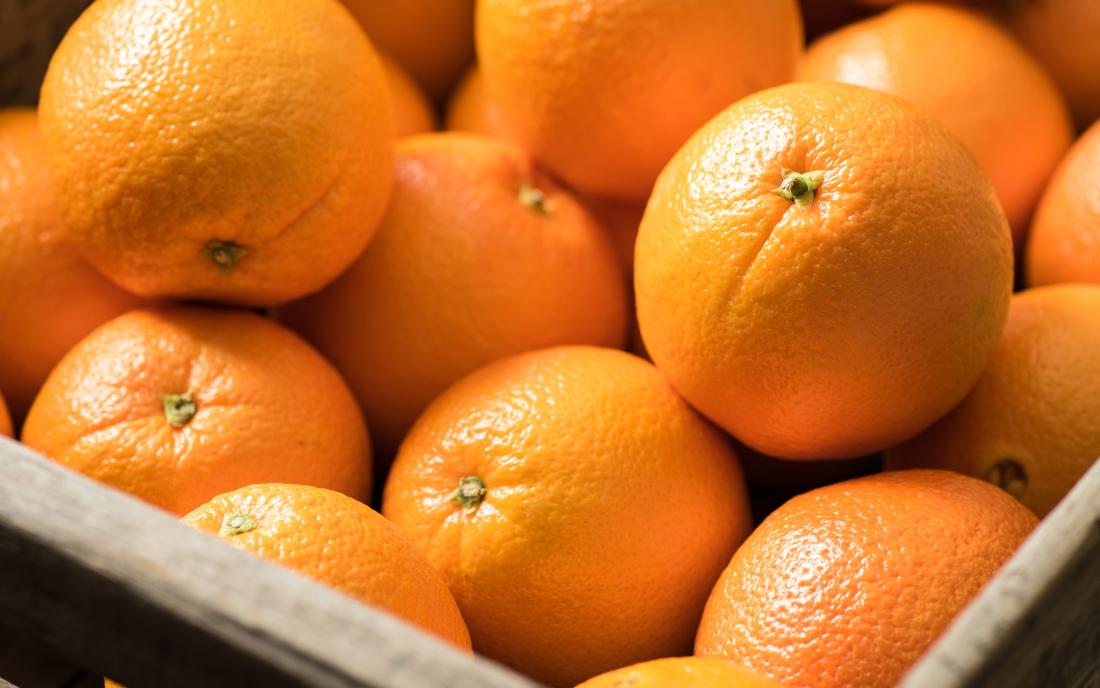The Distinction Between Large and Small Navel Oranges
When selecting oranges, take a moment to examine each fruit’s navel. Some oranges feature a large, round navel with a prominent indentation, while others may only show a small dot.
In terms of quality, large navel oranges and small navel oranges differ significantly. Cutting into a large navel orange reveals a navel covered in a white membrane, with few segments inside, mostly consisting of peel, and a less appealing flavor. Typically, the segments of these oranges lack sweetness and contain less juice than expected.
On the other hand, small navel oranges have a less defined navel, a thinner peel, and their segments are juicier and sweeter. The key differences between large and small navel oranges lie in their sweetness and juice content. When purchasing oranges, take note of the navel to ensure you select the finest fruits.
Tips for Choosing Tasty Oranges
In addition to examining the navel, consider other factors when buying oranges to find the most delicious options.

- Color
The vibrant orange hue is the first thing that grabs our attention at the orange display, but a closer look reveals a variety of shades among oranges. Generally, the same type of orange will be sweeter and juicier if it has a darker color, as this indicates it has received more sunlight and accumulated more sugar. These are the ones you should go for.
- Shape
When selecting oranges, you might notice a range of shapes, from slightly oval to perfectly round, and even some that are plump or have a rough, wrinkled surface. For the tastiest experience, opt for the round oranges, as they tend to be the juiciest and sweetest.
- Feel by hand
It’s a good idea to pick up the orange and gauge its weight, as a larger fruit isn’t always heavier. Sometimes, they can have thick peels and dry sections inside. A heavier orange usually indicates freshness and juiciness, while a lighter one suggests it has been stored for a while and may not taste as good. Additionally, feeling the texture can help; fresh, ripe oranges will have a bit of give when you squeeze them, while those that are hard may have tough skin and lack flavor.

Advanced Tips for Selecting the Perfect Oranges
If you want to take your orange-picking skills to the next level, here are some additional expert tips to ensure every orange you choose is bursting with flavor and juiciness.
1. Smell the Fruit
The aroma of an orange can reveal a lot about its ripeness and sweetness. Fresh oranges emit a strong, citrusy fragrance, even through their peel. If the orange lacks any scent, it may not be fully ripe or flavorful.
2. Check the Skin Texture
While a smooth peel often indicates a thin-skinned orange, don’t immediately dismiss oranges with slightly rough or textured skin. For certain varieties, such as Valencia oranges, this texture can signal a thin peel and a high juice content. Avoid oranges with overly wrinkled or shriveled skin, as this often points to dehydration and dryness inside.
:max_bytes(150000):strip_icc()/GettyImages-1205638014-2000-d0fbf9170f2d43eeb046f56eec65319c.jpg)
3. Examine the Stem End
The area around the stem of an orange can give clues about its freshness. A fresh orange will have a firm, slightly green stem end. If the stem area is brown, dry, or sunken, it may be an older fruit that has lost its peak flavor.
4. Choose the Right Season
Oranges are at their best during their natural growing season. Navel oranges are typically sweeter and more flavorful from November to April, while Valencia oranges shine during the summer months. Shopping for oranges in season ensures a higher likelihood of freshness and sweetness.
5. Avoid Blemishes and Soft Spots
While minor marks or scars on the skin might not affect the taste, large blemishes or soft spots could indicate bruising or internal damage. A firm and evenly colored peel usually signals a well-preserved orange.
6. Consider the Type
Not all oranges are created equal. Depending on your needs, you might prioritize certain types:
- Navel Oranges: Ideal for snacking due to their sweetness and seedless nature.
- Valencia Oranges: Perfect for juicing, as they are incredibly juicy with a balanced sweetness.
- Cara Cara Oranges: Known for their pinkish-red interior and sweet, complex flavor.
- Blood Oranges: With a striking red interior and a slightly tart, berry-like flavor, they’re perfect for adding a unique twist to dishes and drinks.

7. Test a Few Pieces First
If you’re buying oranges from a local market or a store where sampling is possible, try one before purchasing a large quantity. This gives you firsthand knowledge of their flavor and quality.
Storing Your Oranges
Once you’ve selected the perfect batch of oranges, proper storage is key to maintaining their freshness and flavor:
- Room Temperature: Oranges can stay fresh at room temperature for about a week. Keep them in a cool, dry place away from direct sunlight.
- Refrigeration: To extend their shelf life, store oranges in the refrigerator crisper drawer. They can last up to three weeks in a cold environment.
- Avoid Moisture: Excess moisture can lead to mold, so avoid washing oranges until you’re ready to eat them.
Conclusion
Choosing the best oranges is both an art and a science. By paying attention to the navel size, color, shape, weight, and texture, you can consistently pick oranges that are juicy, sweet, and full of flavor. Remember to also consider the season and type of orange to match your specific needs.
Armed with these tips, you’re sure to elevate your orange-picking game and enjoy the most delicious citrus fruits every time. Whether you’re snacking, juicing, or adding them to recipes, the perfect orange can make all the difference. Share these tips with friends and family to spread the citrus love!
